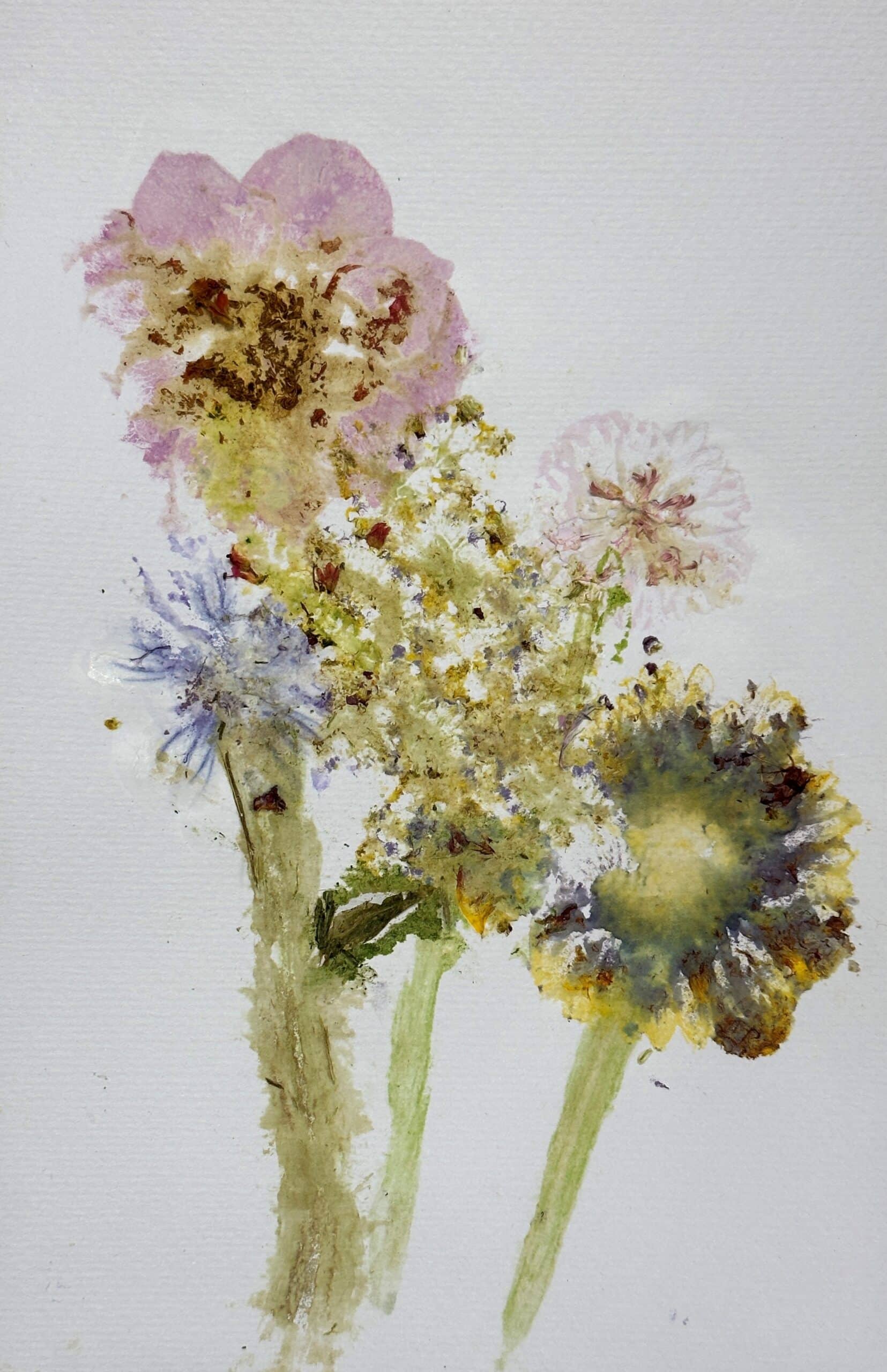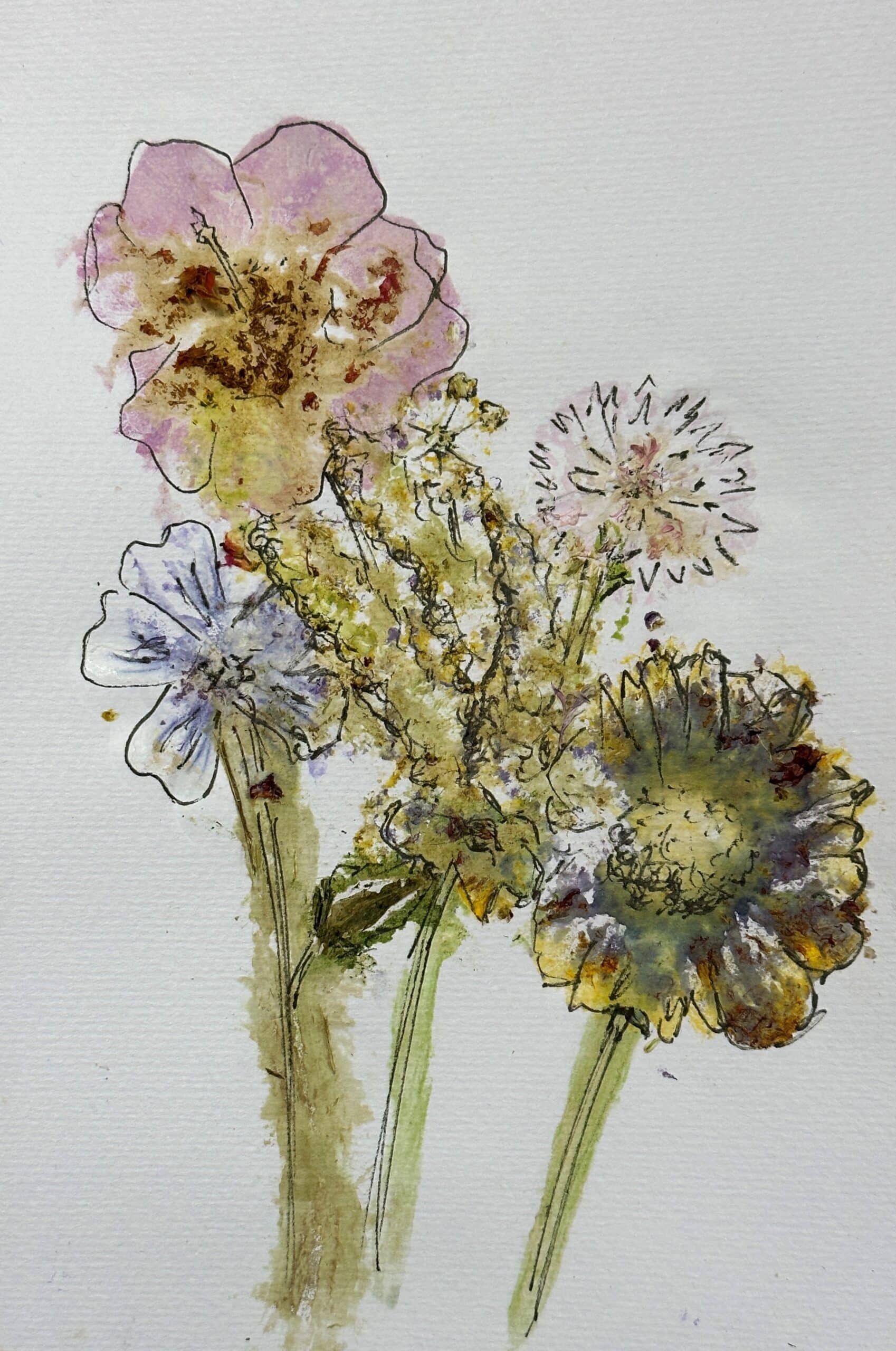by Jared Hart
If you have a collection of flowers that are blooming, consider turning them into art! Explore a fun, unique way of making art is by using a technique called flower pounding. This artform uses flowers and a hammer to transfer the flower’s pigments onto the paper.
This was my first experiment with flower pounding, and I learned a lot throughout the process. If you’d like to see more in-depth instructions, there is a short course on Creativebug. Creativebug is an online resource full of creative courses. If you have a Hamilton East Public Library card, you already have full access to this site. Just log in here using your library card.
Once you’re logged in, you should have access to all of courses on the site including this course on flower pounding. Follow along to learn how to get started with flower pounding art.
How to Get Started with Flower Pounding Art
To get started, you’ll need fresh cut flowers, scissors, a hammer, paper towels, wax paper, and watercolor paper. All of these supplies are available in Ignite Studio, just ask a staff member for help and bring your own flowers. This process works best with hot-press watercolor paper because it is smooth and really allows the flowers to transfer into the paper. I didn’t have that, but was still able to get some fun results.
Trim Your Flower
Before hammering your flower, you will need to trim off most or all the chunky centers. These green areas hold a lot of liquid and can muddy your print, which will hide the vibrant pigments of the flower. Be careful when cutting these off, as it is also the area that holds the petals together.

Place Your Flower
Once the petals are trimmed, lay them face down on your watercolor paper where you’d like to create the print. If the petals fell apart when trimming, just try to rearrange them on the paper.



Cover & Hammer
Once the petals are arranged the way you’d like them, carefully place wax paper on top of it and begin hammering the flower. In the photos below, I used transparency sheets for better visibility.



You can also add stems and leaves to your prints. If you want your stem print to be thin, make sure to hammer very lightly since there is a lot of liquid in this section of the plant. This technique can also be used to add leaves.

My results were a little muddled due to poor beginner choices and not using the recommended “hot-press” watercolor paper. I decided to use a fine point marker to add some additional details and character to my final print.


I hope you get a chance to try this fun printmaking technique before all the petals fall as the colder seasons approach. Share your flower pounding art with us on the Ignite Community Discussion Board. Happy Making!

